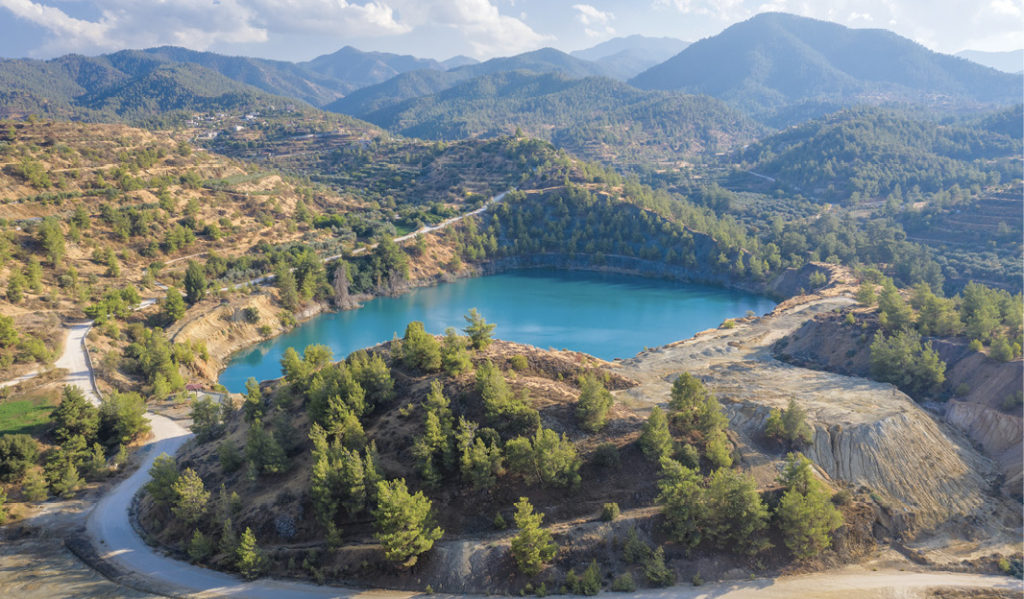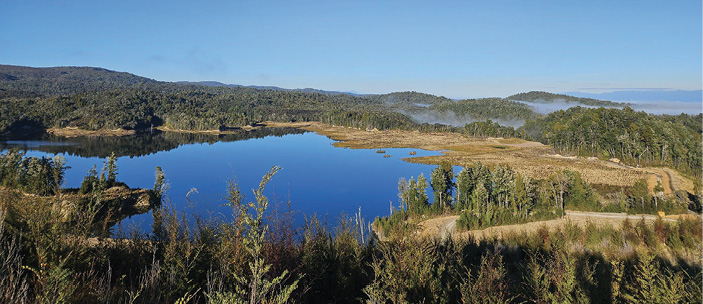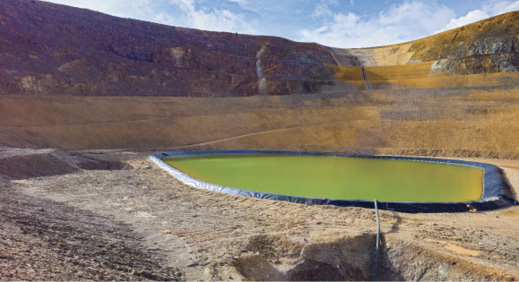Q & A on mine closure with Dr. Neeltje Slingerland

Dr. Neeltje Slingerland is the mine closure practice lead (Canada) at WSP. She is a geoscientist in Alberta and B.C. and a landscape architect in Ontario, specializing in landform design for closure of mine waste structures. She has a PhD in geo-environmental engineering from the University of Alberta, a master of landscape architecture from Guelph University, and a B.Sc. with earth science minor from the University of Waterloo.
Q: I am interested in hearing about your experience. How did you become interested in mine closure?
A: My background is a bit varied, and I think this is common in mine closure professionals because there are few opportunities to learn. My exposure was in an educational institution where there are a few short courses here and there. Mine closure touches on everything, so you cannot take somebody from a bachelor program right out of school and expect them to be a mine closure expert. Typically, the people working in mine closure have multiple degrees in different areas that overlap, so they understand how everything is connected, or they have a lot of experience.
It is an interesting area of study because you end up learning constantly. There has not been a lot of mine closures, relatively speaking. You are constantly innovating and trying to understand how these different, highly technical areas fit into one another and affect one another. When I do speak to students at the universities, there tends to be a lot of enthusiasm for the closure aspects of mining. It is completely opposite from what we have historically seen in the industry. Students are excited to learn about it and the potential of making mining a greener, more sustainable industry than it has been in the past.
There are a lot of different reasons for this, including abandoned mines. Often, the costs of closure are greatly underestimated. With that underestimation, you can have the best of intentions, but if you are working with a number that is not realistic and you suddenly find that out, you know you will need a lot more money, and that is how companies go bankrupt. And that is how mines get abandoned. There is not enough money to do it. It is poor cost estimation, and it is not to say there were not good intentions. I would say predominantly mines close ahead of schedule and not according to their life of mine closure plan.
Q: What happens if a company does not follow the closure plan? Are they subject to fines?
A: It depends. Region to region around the world, and in some mining jurisdictions, there is something called trailing liability so the previous owner would be liable for the closure costs, and that puts a lot more pressure on whoever you are selling your site to. In some instances, companies will not sell it to a company who could make decisions that they would not agree with if they will be liable regardless. In other instances, the company could go bankrupt and there are not a lot of repercussions that can happen at that point.
It is unfortunate, but this is why we have a growing catalog internationally of sites that are abandoned or do not have owners anymore. Occasionally, mining companies buy another mine that they think is going to be profitable, but it comes with legacy sites that they were not aware of. It is quite an interesting challenge.
Q: In terms of the cost of a mine closure, what are companies usually looking at?
A: We have seen costs range from hundreds of millions all the way up to billions.
The one that has been most publicized recently is the Ranger mine site that is in the billions. It depends on what risks are involved and the level of complexity. The best resource for references on closure statistics is government documentation. If the government is responsible for closing or reclaiming those sites, the information is public.

Q: Would open pit mines have a much higher closure cost than underground mines?
A: They can, but not necessarily. It is not a black and white thing; it depends on the complexity of the closure. They can be relatively straightforward to clean up or very complex potash underground mines that are going to take up to 1,000 years to backfill with water. Even if it is just groundwater backfilling, it requires monitoring for an extended timeframe. It is an interesting conundrum. How do you communicate what needs to be done to future generations and potentially over that length of time?
It opens these interesting technical questions, but then in closure you get layers of additional environmental and social questions. It is one more reason it is a very interesting area to work in.
Q: Are there any areas of mine closure that are more important or is it site-specific?
A: It is site-specific. We are trying to put nature back. Ideally, we have appropriate geochemistry, and all these things are part of the puzzle. We are trying to find an optimal solution and put a puzzle back together, and every site will have different things that throw that off. We are trying to get back to a functional and stable system. Mines might not have salvage topsoil, or those topsoil salvage areas might be dead, and other areas might have difficult geochemical issues. At each site, we will have to navigate these problems. There tends to be one or two issues that dominate and start to dictate how things move forward.
A closure plan in most cases can be implemented within five to 10 years. And in some cases, water must be treated for an extended timeframe. There are people on site monitoring it and fixing any areas that need to be refined.
Or there may be instances of erosion, so there is a need to revegetate. We have this wide range of situations to wrap our head around.
It is very important to get things right from the beginning. We have a lot of design decisions to be made at the beginning, and the impact of those decisions is carried all the way through to the end. We have been told for years and years that we need to design with the end in mind. We need to develop the materials, tailings, and waste rock in such a way that our waste products are something that we can close.
Closure professionals tend to be included to an increasing extent as the mine ages and as you get closer to closure. However, the largest benefit of using closure practitioners could be right at the beginning instead and in conjunction with the other technical disciplines.
When you compare what you are doing in terms of material processing in geotechnical engineering, they can be misaligned with the closure plan. You may realize that you cannot achieve the outcome written in your closure plan with the processing method recommended.
There needs to be so much communication. Closure professionals are a little bit like a mining dating service for professionals because you are constantly saying you are doing this, so you need to talk to this person.
There is a lot of talk right now about biodiversity and nature loss. Mines need to be nature positive moving forward, and closure is a big aspect of how our mining companies are going to get there. We are at a turning point where we are starting to recognize that our world is changing. We need to act fast, and people are listening, and actions are being implemented to move in that direction.
It is a very exciting field now, but 15 or 20 years ago, the role of a mine closure specialist basically did not exist.

Q: Do you need a flexible closure plan as some aspects will likely have to change over time?
A: Think about a mine life from the early planning stages when there is no mine all the way to the end where you are going through all these iterations. Once you get to a certain point and are doing reassessments, the closure plan does something similar. Even if the mine plan is at an advanced stage and you are ready to put shovels in the ground and start building, the closure plan still must be conceptual because you do not have all the information yet. As you dig, you are going to learn more about what you are dealing with. As you go through each iteration of that mine and every change, you are rewriting the closure plan. If you have designs, you are adjusting those designs until you get to a certain point. For example, if a facility is only intended to last halfway through the mine life and it is now between two and five years from the end of that facilities lifespan, you can start the detailed design.
Ideally, we are doing progressive closure wherever we can on site. Whenever there is a change in the mine plan, there is a conversation that happens between the closure specialists and the mining company to optimize how that occurs so that we are not making decisions throughout the life of the mine that make it difficult to close.
This is a real shift in thinking. We still see miners who are trying to wrap their head around this because they are in the business to mine, they are not in the business historically to close it. It is a shift in thinking that you need to get the technical stuff right in terms of the stability, analysis, et cetera, but it is equally important that you are not designing something that cannot be closed or creating challenges later that will be expensive and less desirable environmentally and socially.
Q: In terms of in terms of technology, do you use a lot of in-house proprietary software and solutions or is it a combination of in-house and commercial solutions?
A: We do a lot of modeling, and your model is only as good as the information that goes into it. It takes a really experienced individual to be able to understand the implications and how the model is representing them.
We use a variety of software, whatever is going to be the best tool to get the job done. For example, I do a lot of landform design for closure, and we have a variety of tools to do that. We use both in house software as well as external software and it depends on the job.
When we need modeling to understand the potential performance of landform designs, we have three or four different tools that we use depending on the type of design we are implementing, whether it is macro scale, landform design, or there are micro topographic changes in in the landform as well.
We have developed some proprietary software that allows us to do very quick regrading. It is important to be flexible and use the right tool rather than get bogged down and stuck in in your ways with one tool in my perspective. The benefit of using our inhouse software has been when we are working on a project, and we want it to show us a certain piece of information that currently is not available. You just reach out to your colleague who developed the software and ask them to add it in. It might take a couple of weeks or months before that is added in and checked, but at the end you have a customized software that does exactly what you want it to do.
Q: In terms of ongoing monitoring during closure, is most of it remote using sensors as opposed to having people on site?
A: We still use a combination, but there is a lot that can be done remotely. At least for a small period, some water treatment is needed so you need people on site. Some monitoring is done better with people on the ground. Some remote technology is better to get the big picture, like satellites, LIDAR, or drones.
Q: How important is community engagement when closing a mine?
A: That is a big issue and rightfully so. If I had a mine in my backyard, that would be my big question. What will I be able to use that land for afterwards? What is it capable of? Closure can be an unpopular word, and site transition perhaps speaks more to what we are working towards. Our target is not to have a closed mine site. Our target is to have a functional and high capability post mining landscape.
That site transition is what we are really working towards, and that we cannot do that without stakeholder and local community engagement. It is essential at every stage, and it is the right thing to do. We see it in the urban realm all the time. If there is a new building being constructed within a few blocks of you, or a new park, you receive notification.
You can get a lot of creative ideas that are site specific from consultation. It is in everybody’s best interest. I think as an industry we are increasingly valuing it much more and realizing that it is good for everybody involved. There is so much opportunity if we get the right people around the table. For all the unfortunate stories we have had in the past, there really is so much potential and opportunity for positive outcomes.
Catherine Hercus is a freelance technical writer.
Comments